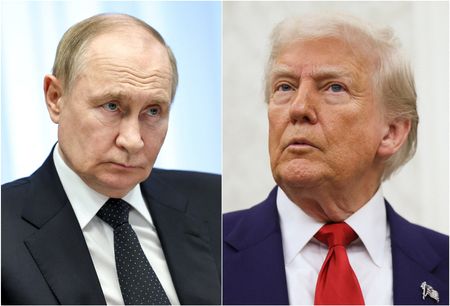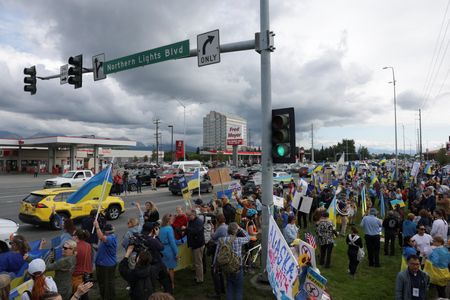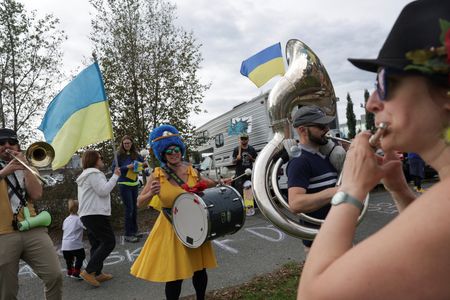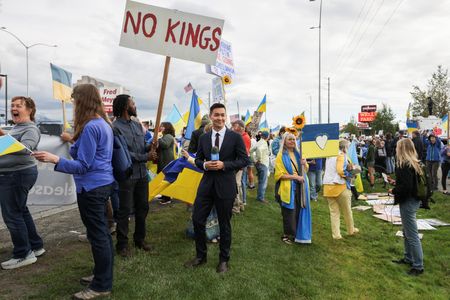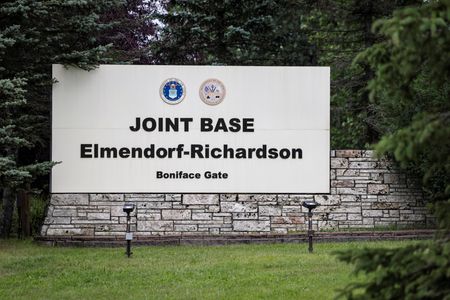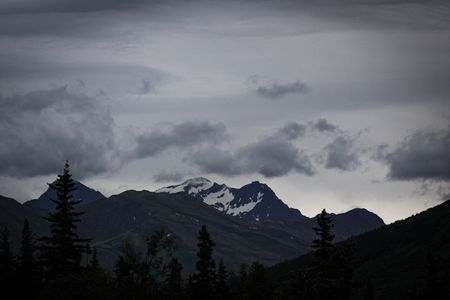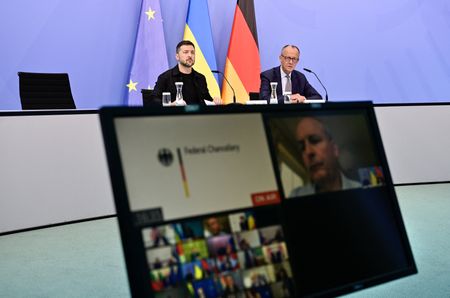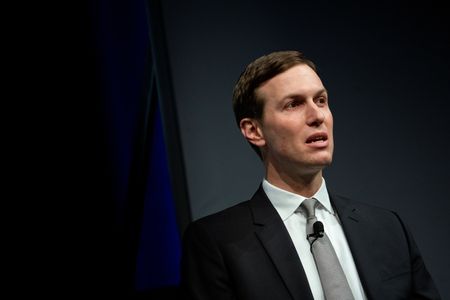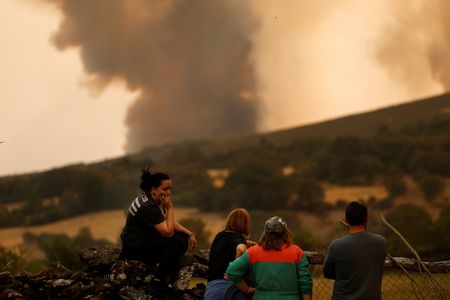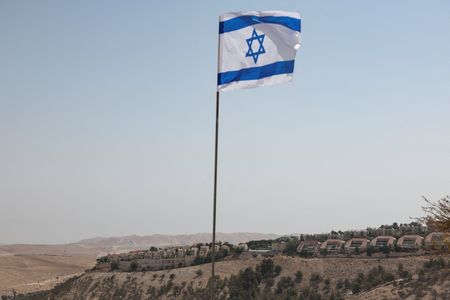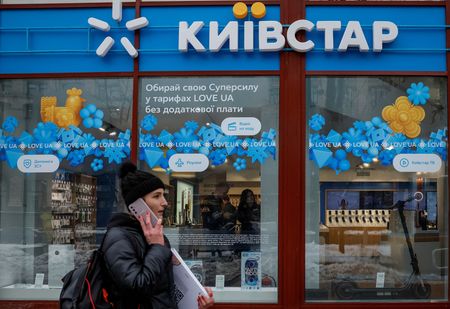By Andrew Osborn and Darya Korsunskaya
MOSCOW (Reuters) -Donald Trump and Vladimir Putin meet at a Cold War-era air force base in Alaska on Friday to discuss a ceasefire deal for Ukraine that the U.S. sees as a possible way to end the deadliest war in Europe since World War Two.
Ukrainian President Volodymyr Zelenskiy, who was not invited to the talks, and his European allies fear Trump might sell out Ukraine by essentially freezing the conflict and recognising – if only informally – Russian control over one fifth of Ukraine.
Both Trump and Putin are seeking wins from their first face-to-face talks since Trump returned to the White House.
Trump, who casts the war as a “bloodbath” fraught with escalatory risk, is pressing for a truce in the 3-1/2-year-old war that would bolster his credentials as a global peacemaker worthy of the Nobel Peace Prize.
For Putin, the summit is already a big win as he can use it to say that years of Western attempts to isolate Russia have unravelled and that Moscow has retaken its rightful place at the top table of international diplomacy.
The summit, the first between a U.S. and Russian leader since 2021, will begin at 11 a.m. Alaska time (1900 GMT).
Trump, who once said he would end Russia’s war in Ukraine within 24 hours, conceded on Thursday it had proven a tougher nut to crack than he had thought. He said that if Friday’s talks went well, quickly setting up a subsequent three-way summit with Zelenskiy would be even more important than his encounter with Putin.
One source acquainted with Kremlin thinking said there were signs that Moscow could be ready to strike a compromise on Ukraine given that Putin understood Russia’s economic vulnerability and costs of continuing the war.
Reuters has previously reported that Putin might be willing to freeze the conflict along the front lines, provided there was a legally binding pledge not to enlarge NATO eastwards and to lift some Western sanctions.
Russian Foreign Minister Sergei Lavrov, wearing a USSR sweatshirt on his arrival in Alaska, said Moscow never revealed its hand in advance. The Kremlin suggested no documents would be signed at the summit, but praised Trump’s special envoy Steve Witkoff for laying the groundwork for the meeting.
Ukraine and its European allies were heartened by a call on Wednesday in which they said Trump had agreed Ukraine must be involved in any talks about ceding land. Zelenskiy said Trump had also supported the idea of security guarantees for Kyiv.
Russia, whose war economy is showing signs of strain, is vulnerable to additional U.S. sanctions – and Trump has threatened tariffs on buyers of Russian crude, primarily China and India.
“For Putin, economic problems are secondary to goals, but he understands our vulnerability and costs,” the Russian source said.
The day before the summit, Putin held out the prospect of something else he knows Trump wants – a new nuclear arms control agreement to replace the last surviving one, which is due to expire in February next year.
COMMON GROUND?
Trump said on the eve of the summit that he thought Putin would do a deal on Ukraine, but he has blown hot and cold on the chances of a breakthrough. Putin, meanwhile, praised what he called “sincere efforts” by the U.S. to end the war.
The source familiar with Kremlin thinking said it looked as if the two sides had been able to find some common ground.
“Apparently, some terms will be agreed upon… because Trump cannot be refused, and we are not in a position to refuse (due to sanctions pressure),” said the source, who spoke on condition of anonymity because of the matter’s sensitivity.
Putin has so far voiced stringent conditions for a full ceasefire, but one compromise could be a truce in the air war. Putin has said he is open to a ceasefire but has repeatedly said the issues of verification need to be sorted out first.
Zelenskiy has accused Putin of playing for time to avoid U.S. secondary sanctions and has ruled out formally handing Moscow any territory. Trump has said land transfers could be a possible way of breaking the logjam.
Beyond territory, Ukraine has been clear in talks with Western allies that it needs a security guarantee backed by Washington. It is unclear how that guarantee could work – and what part the U.S. would play in it.
Putin in 2024 stated his demands for stopping the war – the withdrawal of Ukrainian troops from the parts of Donetsk, Zaporizhzhia and Kherson regions that they still control, an area now of about 21,000 sq km (8,100 sq miles).
Putin also said Kyiv would have to officially notify Moscow that it was abandoning its plans to join NATO, and that it intended to remain neutral and non-aligned.
Ukraine has said these terms are tantamount to asking it to capitulate.
(Reporting by Andrew Osborn and Darya Korsunskaya in Moscow; Writing by Guy Faulconbridge; Editing by Kevin Liffey, Jon Boyle, Frances Kerry and Gareth Jones)

